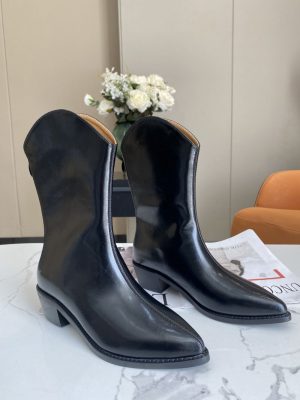my country’s safety footwear standards were formulated in the 1990s. In 2007, the old production and inspection standards were revised and new standards were formulated to protect the occupational health and safety of workers.
Safety shoes in our country can be roughly divided into: toe protection safety shoes (that is, anti-smashing labor protection shoes, anti-smashing safety shoes), anti-puncture safety shoes (we usually call them anti-puncture safety shoes), and electric insulation shoes (that is, our Usually called insulated shoes), anti-static safety shoes, acid and alkali resistance.
Standard GB12011-2009 for electrically insulating shoes, mainly used by electricians, electronic operators, cable installers, substation installers, etc. This kind of shoes can only be worn in the working environment with the power frequency voltage below 1KV, and the upper must be kept dry, and cannot be exposed to sharps, high temperature and any corrosive substances. If the upper is corroded or damaged, it cannot be used. Replace with new electrically insulating shoes immediately.
Standard for toe protection safety shoes: GB21148-2007/GB21147-2007/GB21146-2007. The safety performance of the inner toehead is divided into three levels: safety type, protection type, and occupation type. The safety type and protection type are commonly used by enterprises. Therefore, they are often used in metallurgy, mining, forestry, ports, loading and unloading, quarrying, machinery, construction, petroleum, Chemical industry, etc.
The standard for puncture-resistant safety shoes is GB21148-2007. This standard requires that the puncture resistance must be greater than or equal to 1100N to qualify as a qualified product. It is suitable for mining, fire protection, construction, forestry, cold work, and machinery industries.
Anti-static safety shoes standard: GB21148-2007, anti-static shoes are worn more often in some chemical plants, gas stations, liquefied gas filling and other industries, because these industries are flammable places. Wearing anti-static shoes can eliminate the accumulation of static electricity on the human body, and the insulation resistance is maintained between 100KΩ-1000MΩ, but when wearing these shoes, you cannot wear insulating woolen thick socks or use insulating insoles. It should be matched with anti-static clothing; you should also wear 200 Test the resistance of shoes within hours. Only when the resistance is within the specified range can it be used as anti-static shoes, otherwise it cannot be worn as insulated shoes.
The implementation standard of acid and alkali-resistant safety shoes is GB12018-1989. The shoes are used in electroplating, pickling, electrolysis, liquid preparation, chemical manipulation and other fields, but the concentration of acid and alkali operations in these fields must not be too high; the shoes must not be exposed to high temperatures. It must not be injured by sharps, and the sole must not leak. It should be rinsed and dried with clean water immediately after wearing. It should not be exposed to direct sunlight or dried.
The implementation standard of conductive shoes is GB21148-2007. The shoes have good conductive properties and can eliminate the accumulation of static electricity on the human body in a short time. The insulation resistance is required to be less than 100 KΩ. They are generally used in highly anti-static or particularly flammable and explosive places, but These places require no risk of electric shock. Conductive shoes, like anti-static safety shoes, cannot wear insulated woolen thick socks or use insulated insoles. They must be used in conjunction with conductive clothing. The resistance value test must be carried out within 200 hours. Only when the test is qualified can it be used.



















